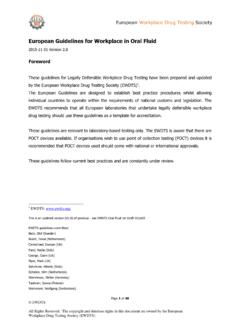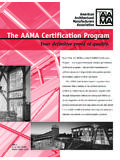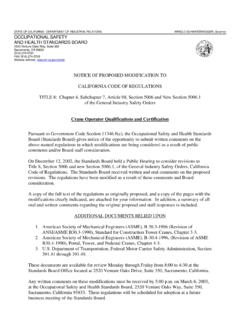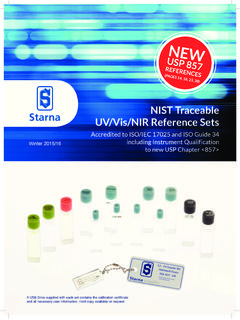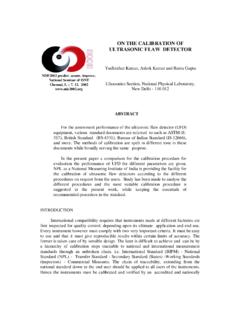Transcription of European Guidelines for Workplace Drug and …
1 European Workplace drug Testing Society European Guidelines for Workplace drug and Alcohol Testing in Hair 2015-11-01 Version Page 1 of 23 Foreword These Guidelines for Legally Defensible Workplace drug Testing have been prepared and updated by the European Workplace drug Testing Society* (EWDTS). They are based on the 2010 version published by Pascal Kintz and Ronald Agius ( Guidelines for European Workplace drug and alcohol testing in hair. drug Test Anal. 2010; 2(8):367-76) and in concordance with the Society of Hair Testing Guidelines (Society of Hair Testing Guidelines for drug testing in hair, Forensic Sci.)
2 Int., 2012; 218:20-24). The European Guidelines are designed to establish best practice procedures whilst allowing individual countries to operate within the requirements of national customs and legislation. The EWDTS recommends that all European laboratories that undertake legally defensible Workplace drug testing should use these Guidelines as a template for accreditation. *Hair Guidelines committee: Agius, Ronald (Germany) Baumgartner, Markus (Switzerland) Kintz, Pascal (France) Salomone, Alberto (Italy) Tsanaclis, Lolita (UK) European Workplace drug Testing Society European Guidelines for Workplace drug and Alcohol Testing in Hair 2015-11-01 Version Page 2 of 23 1.
3 General .. 3 Objectives .. 3 2. Definitions .. 3 3. Specimen Collection .. 5 Introduction .. 5 Collector Qualifications .. 6 Collection Site .. 7 Chain of Custody Form (CCF) .. 7 Collection Process .. 8 4. Laboratory Organisation .. 10 5. Laboratory analyses and procedures .. 10 Sample receipt .. 10 Sample decontamination and extraction .. 11 Sample Analysis .. 12 6 Analytical methods validation criteria .. 12 Screening Tests .. 12 Confirmation Tests .. 12 7. Quality assurance and quality control .. 13 Introduction .. 13 Personnel .. 13 Head of Laboratory.
4 13 Authorising Scientist .. 14 Laboratory Analyst .. 14 Toxicologist .. 14 Expert Witness .. 14 Other personnel .. 14 Quality Manager .. 14 Accommodation and Environmental Conditions .. 14 Quality Control .. 15 Internal Quality Control .. 15 External Quality Control .. 15 8. Interpretation of results .. 15 Introduction .. 15 Theoretical Background .. 15 Cut-offs - Criteria for a Positive drug Test .. 16 Alcohol .. 16 Opiates/opioids .. 17 Cocaine .. 17 Amphetamines .. 18 Cannabinoids .. 18 Methadone .. 18 Buprenorphine .. 18 Benzodiazepines/z-drugs.
5 19 Ketamine .. 19 New psychoactive substances .. 19 Reporting the Results .. 20 European Workplace drug Testing Society European Guidelines for Workplace drug and Alcohol Testing in Hair 2015-11-01 Version Page 3 of 23 9. Challenges to drug test results .. 20 External 21 Effects of Cosmetic Treatment .. 21 Appendix A Instructions for Hair Collection .. 22 Appendix B Recommended cut-offs .. 23 1. General Objectives - To provide a common framework for European providers of Workplace drug testing services in Europe within which Workplace drug Testing (WDT) in hair should be performed.
6 - To provide guidance to European laboratories interested in the determination of drugs of abuse in hair, in order to provide reliable results for the purpose of WDT. - To help promote and harmonise efforts by providing Guidelines which are accepted at the European level. - To ensure that the processes undertaken are capable of legal scrutiny. - To provide safeguards to protect the specimen donors. - To define common quality assurance and quality control criteria for laboratories that are capable of being accredited by an external body. 2. Definitions For purposes of these Guidelines the following definitions have been adopted: Adulteration See Tampering Aliquot A fractional part of a sample used for testing.
7 It is taken as a sample representing the whole sample. Authorising Scientist A person who reviews all pertinent data and quality control results in order to attest to the validity of the laboratory's test reports. Calibrator A solution of known concentration used to calibrate a measurement procedure or to compare the response obtained with the response of a test sample/sample. The concentration of the analyte of interest in the calibrator is known within limits ascertained during its preparation. Calibrators may be used to establish a calibration curve over a concentration range of interest.
8 European Workplace drug Testing Society European Guidelines for Workplace drug and Alcohol Testing in Hair 2015-11-01 Version Page 4 of 23 Chain of Custody Procedures to account for each specimen by tracking its handling and storage from point of collection to final disposal. These procedures require that the donor identity is confirmed and that a chain of custody form is used from time of collection to receipt by the laboratory. Within the laboratory appropriate chain of custody records must account for the samples until disposal. Chain of Custody Form A form used to document the procedures from time of collection until receipt by the laboratory.
9 Collecting officer A person trained to collect specimens from donors. Collection Site A place where individuals present themselves for the purpose of providing a specimen for analysis. Confirmation Test An analytical procedure to identify and quantify the presence of a specific drug or metabolite which is independent of the initial test and which uses a different technique and chemical principle from that of the screen test in order to ensure reliability and accuracy. Customer The organisation requesting the drug testing service. Cut-off A concentration level set to determine whether the sample is positive or negative for the presence of a drug .
10 Donor The individual from whom a hair specimen is collected. Laboratory The facility providing the analytical services to detect drugs of abuse. Negative result A result reported by the laboratory that indicates that either no drug is present in the sample or that any drug present is below the cut-off. Positive result A result reported by the laboratory as positive means that there is conclusive evidence that a drug is present in the sample tested at a level greater than or equal to the confirmation cut off concentration. Quality control sample A sample used to evaluate whether or not an analytical procedure is operating within pre-defined tolerance limits.



